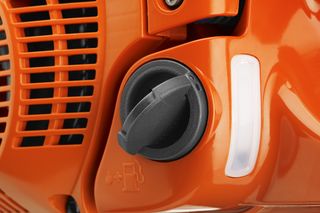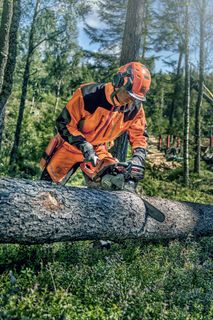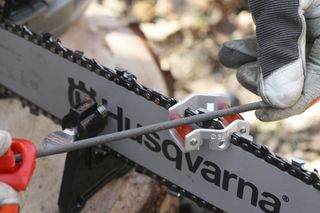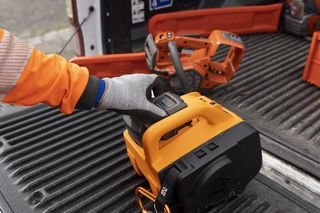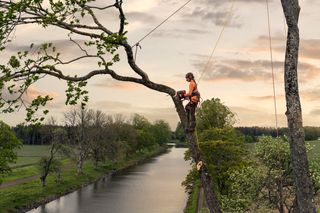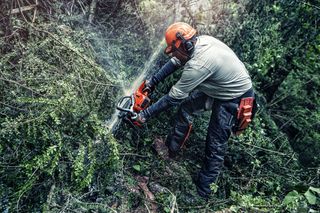
Directional Felling
Safe felling requires great care and precision. The directional notch determines the direction of fall, and you fell the tree with the felling cut. Left between these two cuts is the hinge, which directs the tree down to the ground towards the planned directional target in a safe way.
Directional notch
The directional notch can be made in a number of ways. The condition of the tree, the terrain and local tradition mean that the type of directional notch may differ. Avoid cutting the directional notch too deep. It should be no more than 15-20% of the breast height diameter.
The most common directional notches are open-face directional notch in two versions, open-face directional notch with a larger opening angle, and inverse directional notch (Humboldt). We recommend using the open-face notch, because it can be used in most cases and is the easiest to learn.
The open-face directional notch with larger opening angle has the advantage on more sloping terrain where there is a need for a hinge to remain intact longer because of the slope. The inverse directional notch is used on very large trees on steep terrain and tree species that tend to split when felled.
The directional notch is made in two parts: the top cut and bottom cut. The opening of the directional notch depends on which method is used, as shown adjacently. Note that the cuts should be made as close to the ground as possible for better control and stability when the tree falls. It is sometimes necessary to saw away obstructing root protrusions before making the directional notch.
The felling cut
When the directional notch has been made, it is time to saw the felling cut towards the directional notch. Remember to saw right to the hinge width! The felling cut will normally be level with or slightly above the level of the directional notch. The technique used for making the felling cut depends on the thickness of the trunk and the length of the guide bar.
Use a breaking bar, felling bar or felling wedge in order to ensure safe felling. These also prevent the tree from leaning back in the opposite direction and pinching the guide bar in the tree while making the felling cut. Also make sure that there is enough fuel in the tank. Running out of fuel while sawing the felling cut can be dangerous.
The hinge makes the felling safe
The hinge is the most important factor in ensuring safe and clean felling. It is the unsawn part between the directional notch and felling cut that works like a normal hinge, guiding the tree down to the ground. The hinge must have a uniform thickness and its length should be at least 80% of the tree diameter at breast height. The width should be 10% of tree diameter at breast height. For trees thicker than 30cm, it is sufficient to have a hinge of about 3cm. The opening angle of the directional notch determines how long the hinge is to be intact. The smaller the angle, the earlier the hinge breaks off. The different directional notches are described herein.

